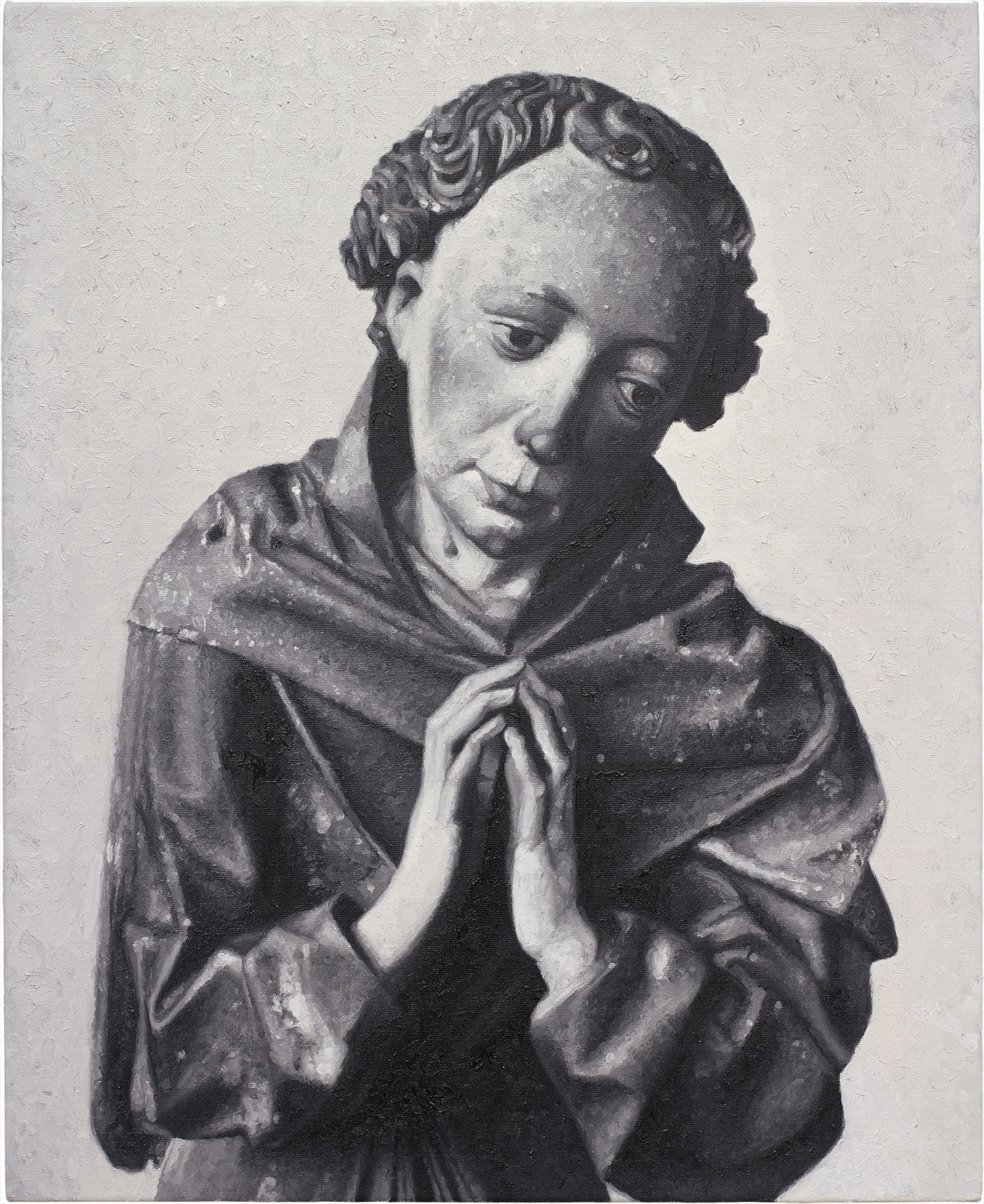

4
Rudolf Stingel
Untitled (Traminer Alter)
Full-Cataloguing
“ I wanted to be against a certain way of thinking about art, to question its ability to inspire awe.” - Rudolf Stingel
Rudolf Stingel, the Italian-born, New York-based artist, has been captivating his audiences since the 1980s. In the past decade, he has exhibited a variety of multi-media endeavors, including his gold wallpaper paintings, silver-tinted gauze pieces, celotex insulation board works, black and white portraits, and expansive carpet installations. Throughout his career, Stingel has created work that, though strikingly different in aesthetics and medium, has consistently explored the limits of painting and the materiality of art. As Stingel explains: “I’m demonstrating that, using different surfaces, we can produce very diverse environments.” (Rudolph Stingel, February 2004 interview in conjunction with Home Depot exhibition, Museum fur Moderne Kunst, Frankfurt, 2004)
In 2005, with Stingel’s portrait of his gallerist Paula Cooper, he began to explore black and white painted portraits based on photographic sources from Robert Mapplethorpe and Sam Samore. In 2009, Stingel pursued a new development with his black and white paintings by creating grisaille renderings of statues of saints. The importance of Stingel’s cultural heritage is evident in his decision to depict Northern Italian, carved-wood, Gothic saints. Northern Italy embraced the Gothic style in the 14th and 15th
century and with it a new sense of figural realism, Stingel in turn decided to reproduce photographic images of these saints as a symbolic self-portrait.
The saint, a figure of praise and worship has now been processed through the lense of a camera; “Photographs are always catalysts for, and forms of, that desire vested in looking, and thus connect directly with the ‘desiring machine’ of the unconscious.” (C. Iles, “Surface Tension,” Rudolf Stingel, Museum of Contemporary Art Chicago, New Haven/London: Yale University Press, 2007,p. 24) These medieval, Christian figures are painted with meticulous, capturing the saint’s somber and thoughtful pose. In the present lot, Saint Leonard is depicted with a deacon’s stole draped heavily around his shoulders, revealing deep pockets of shadows. Saint Leonard’s fingertips touch each other lightly in prayer and his head is tilted slightly to the left in thoughtful contemplation.
As a religious icon, Saint Leonard may have typically been illustrated with the attributes of chains or locks to identify him as the patron saint of prisoners; however, Stingel has closely cropped the sculpture and has chosen to make the saint’s hands together in prayer as the focal point of the painting. The sculptures, standing solemnly in stone in life-size scale have been compressed by Stingel into small intimate icons rendered on linen, taken out of their religious habitats, as Stingel states Things become very scary when you take them out of context and change the scale, but isn't that what art is about? Dislocation?'” L. Yablonsky, ART; The Carpet That Ate Grand Central,” The New York Times, June 27, 2004)
The series of saints (the present lot included) debuted at Paula Cooper Gallery in 2009. Stingel’s exploration of the sanctity of painting and the environments they inhabit has led him to exhibit the works with expansive breathing space between them. As Stingel explains, “The white cube is our fiction of neutrality. But it is of course Modernism’s abstract space that should obliterate all disturbing sounds and isolate each object.” (Rudolph Stingel, February 2004 interview in conjunction with Home Depot exhibition, Museum fur Moderne Kunst, Frankfurt, 2004) The installation, though in Chelsea, summoned the solace and airs of a medieval church, transforming the gallery into a more powerful space divorced from modernism. Critic Jerry Saltz has observed that “Stingel’s installation is a requiem for the white cube,” (Jerry Saltz, "After the Orgy," The Art Review, New York Magazine, March 15, 2009)
The black and white saints have been processed visually through multiples centuries and visions: first sculptor, then photographer and finally through Stingel as painter. Stingel’s interest in artwork’s surface tactility, particularly mark-making, is evident as a recurrent theme in all of his work. “Stingel’s approach to surface is always paradoxical. As much as he critiques painterly surface by submitting it to the photographic image, he is also deepy interested in its seductive, tactile quality.” (C. Iles, “Surface Tension,” Rudolf Stingel, Museum of Contemporary Art Chicago, New Haven/London: Yale University Press, 2007, p. 24)
Rudolf Stingel
Italian | 1956Rudolf Stingel came to prominence in the late 1980s for his insistence on the conceptual act of painting in a context in which it had been famously declared dead. Despite the prevailing minimalist and conceptual narrative of the time, the Italian-born artist sought to confront the fundamental aspirations and failures of Modernist painting through the very medium of painting itself. While his works do not always conform to the traditional definitions of painting, their attention to surface, space, color and image provide new and expanded ways of thinking about the process and "idea" of painting. Central to his multifarious and prolific oeuvre is an examination of the passage of time and the probing of the fundamental questions of authenticity, meaning, hierarchy, authorship and context by dislocating painting both internally and in time and space. Stingel is best known for his wall-to-wall installations, constructed of fabric or malleable Celotex sheets, as well as his seemingly more traditional oil-on-canvas paintings.